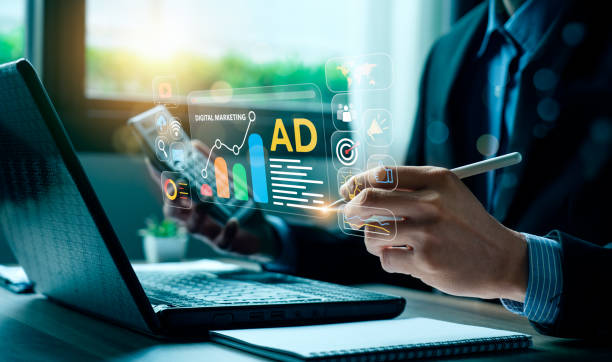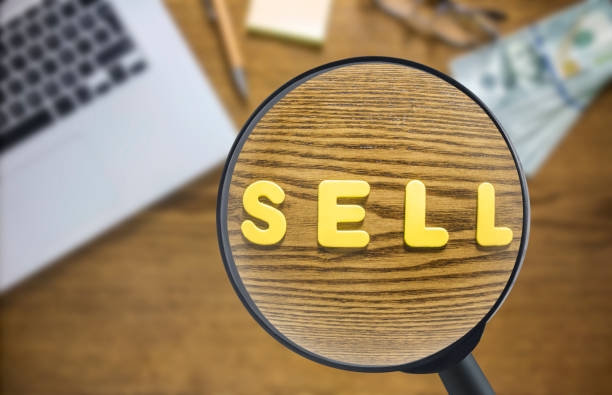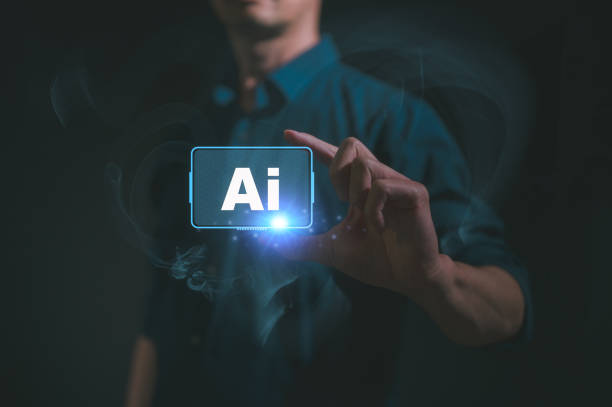What is On-Page SEO and Why Does it Matter?
 What is On-Page SEO and Why Does it Matter?
What is On-Page SEO and Why Does it Matter?
On-page SEO, also known as SEO on the page, refers to a set of techniques and actions that are performed within your website to improve the site’s ranking in search engines like Google.
The main goal of on-page SEO is to optimize the content and structure of the website for search engine crawlers and also for users.
The importance of on-page SEO is not hidden from anyone because it forms the basis of a site’s ranking.
If a website does not have high-quality content and a suitable structure, off-page SEO efforts alone cannot achieve desirable results.
In fact, on-page SEO is the foundation upon which off-page SEO is built.
SEO on the page makes it easy for search engines to understand the content of your site and display it to users who are looking for related information.
This leads to increased organic traffic, improved conversion rates, and ultimately increased sales and profitability.
Failure to pay attention to on-page SEO can cause your website to be placed on lower pages of search results and hidden from users.
So, to achieve success in the online world, paying attention to on-page SEO is essential and should be considered one of the main priorities in the digital marketing strategy.
This also improves the user experience.
In short, on-page SEO includes optimizing page titles, meta descriptions, URL structures, text content, images, internal and external links, site loading speed, and many other things.
By doing these actions correctly, you can ensure that your website is attractive and accessible to search engines and users, and as a result, improve your site’s ranking and traffic.
One of the most important aspects of on-page SEO is producing quality content that is relevant to the target keywords.
Did you know that a weak corporate website costs you a lot of opportunities every day? Solve this problem forever with professional corporate website design by Rasaweb!
✅ Create a powerful and reliable image of your brand
✅ Attract new customers and increase sales in a targeted way
⚡ [Get free website design consultation]
Keyword Research and its Role in On-Page SEO
 Keyword Research and its Role in On-Page SEO
Keyword Research and its Role in On-Page SEO
Keyword research is one of the most fundamental steps in on-page SEO.
Keywords are phrases that users enter into search engines to find the information they are looking for.
By identifying keywords related to your field of activity, you can optimize your website content in such a way that it ranks higher in search results for these keywords.
The keyword research process includes using various tools such as Ahrefs, Moz Keyword Explorer, Google Keyword Planner, and SEMrush.
These tools help you identify popular keywords related to your field of work, assess the level of competition for each keyword, and find long-tail keywords that have lower search volume but higher conversion rates.
The choice of appropriate keywords should be based on their relevance to your business, search volume and level of competition.
On-page SEO is done with these targeted keywords.
After identifying the keywords, you should use them strategically in different parts of your website, including page titles, meta descriptions, internal titles (H1, H2, etc.), main content text, image names, and URLs.
However, you should avoid overusing keywords (Keyword Stuffing), as this can lead to your site being penalized by search engines.
The main goal should be to create high-quality and relevant content for users that naturally includes keywords.
In fact, on-page SEO means proper optimization.
Using LSI (Latent Semantic Indexing) keywords can also help improve on-page SEO.
LSI keywords are words that are semantically related to your main keyword.
Using these words helps search engines better understand the content of your page and display it to users who are looking for relevant information.
For example, if your main keyword is “digital marketing”, LSI keywords can include “SEO”, “online advertising”, “social networks” and “web analytics.”
This helps improve on-page SEO.
Optimizing Title and Meta Descriptions
![]() Optimizing Title and Meta Descriptions
Optimizing Title and Meta Descriptions
The title tag and meta description are two important HTML elements that are displayed in search results and play an important role in attracting users to your website.
The page title is the main title of your page that is displayed at the top of the browser and in search results.
The page title should be short, attractive, and contain the main keyword of the page.
The appropriate length for the page title is about 50-60 characters.
The meta description is a short summary of your page’s content that is displayed below the page title in search results.
The meta description should be attractive and encouraging and encourage users to click on your website link.
The meta description should also contain the main keyword of the page, but it should not be repetitive or misleading.
The appropriate length for the meta description is about 150-160 characters.
A professional on-page SEO respects this.
Optimizing title and meta descriptions for each page of your website is very important.
The title and meta description should be unique and relevant to the page content and help users understand what your page is about.
Using appropriate keywords in the title and meta description can help improve your site’s ranking in search results.
But you should avoid overusing keywords and focus on creating attractive and useful titles and descriptions for users.
On-page SEO cares about these things.
Here is a table for a better view of the title and meta description structure
table {
border-collapse: collapse;
width: 100%;
border: 1px solid #ddd;
}
th, td {
border: 1px solid #ddd;
padding: 8px;
text-align: left;
}
th {
background-color: #f2f2f2;
}
.highlight {
font-weight: bold;
color: #007bff;
}
| Element | Description | Appropriate Length | Example |
|---|---|---|---|
| Page Title (Title Tag) | The main title of the page that is displayed in search results and at the top of the browser. | 50-60 characters | Buy Sports Shoes Online | Shoe Store |
| Meta Description | A short summary of the page’s content that is displayed below the title in search results. | 150-160 characters | Buy the best sports shoes at affordable prices from our store. Free shipping nationwide. |
Optimizing the URL Structure
![]() Optimizing the URL Structure
Optimizing the URL Structure
The URL structure is an important factor in on-page SEO that helps search engines and users to better understand the content of the page.
An optimized URL should be short, descriptive, and contain the main keyword of the page.
URLs should be separated by hyphens (-) and avoid using uppercase letters, numbers, and special characters.
For example, instead of using the URL below
https://www.example.com/page?id=123
Use the following URL
https://www.example.com/buy-sports-shoes
The second URL clearly shows that the page is about buying sports shoes, while the first URL does not provide any information about the content of the page.
On-page SEO is better done with optimized URLs.
Also, try to avoid creating long and complex URLs.
Long URLs can be confusing for search engines and users and can lower your site’s ranking.
It is better to design URLs in a way that they are easily readable and memorable.
Using keywords in the URL can help improve on-page SEO, but you should avoid overusing keywords and focus on creating natural URLs that are relevant to the page content.
Optimizing on-page SEO improves your site’s ranking
Are you dissatisfied with the low sales of your online store?
Rasaweb is your solution for having a professional and high-selling online store.
✅ Significant increase in sales and income
✅ Easy and enjoyable shopping experience for customers
⚡ Get a free consultation from Rasaweb right now!
Optimizing Text Content
 Optimizing Text Content
Optimizing Text Content
Text content is one of the most important factors in on-page SEO.
Your website’s content should be high-quality, relevant, engaging, and valuable to users.
The content should answer users’ questions and needs and encourage them to stay on the site and interact with it.
To optimize text content, you should pay attention to the following
- Use appropriate keywords Use keywords naturally and strategically in your content.
Avoid overusing keywords, as this can lead to your site being penalized by search engines. - Create unique content Your content must be unique and original.
Avoid copying content from other sites, as this can harm your site’s ranking. - Appropriate content structure Divide your content into smaller sections and use internal headings (H1, H2, etc.), paragraphs, lists, and images to better organize the content.
- Readability of content Write your content in a way that is understandable and readable for users.
Use short and simple sentences and avoid using specialized and complex terms. - Content update Update your content regularly to keep your information up-to-date and accurate.
Producing high-quality and SEO-optimized content is one of the best ways to attract organic traffic and improve your site’s ranking in search results.
A good on-page SEO creates good text content.
Optimizing Images
 Optimizing Images
Optimizing Images
Images can play an important role in attracting users’ attention and improving the user experience.
But images must also be optimized for on-page SEO so that search engines can understand them and index them correctly.
To optimize images, you should pay attention to the following
- Image file name The image file name should be descriptive and contain the main keyword of the image.
For example, instead of using the file name “IMG_1234.jpg”, use the file name “buy-sports-shoes.jpg”. - Image Alt tag The image Alt tag is the text that is displayed to the user if the image is not displayed.
The image Alt tag should be descriptive and contain the main keyword of the image. - Image file size The image file size should be as small as possible to increase page loading speed.
You can use image compression tools to reduce the image file size. - Image format Use appropriate image formats such as JPEG, PNG or WebP.
By optimizing images, you can help improve your site’s on-page SEO and get more traffic through image search.
Using high-quality images in high-quality content can strengthen your on-page SEO.
Internal Linking
 Internal Linking
Internal Linking
Internal linking refers to the process of creating links between different pages of your website.
Internal linking can help search engines to better understand the structure and content of your website and help users to easily navigate your site.
Internal linking should be done strategically and relevantly.
Links should be created from pages with relevant content to pages you want to improve their ranking.
Use appropriate and descriptive anchor text for internal links.
The link text should accurately describe the content of the page you are linking to.
For example, if you want to link to a page about “buying sports shoes”, use the link text “buying sports shoes” instead of “click here”.
Correct linking has a great impact on on-page SEO.
Internal linking can help improve your site’s ranking in search results, increase site traffic, and improve the user experience.
Optimizing on-page SEO increases your site traffic.
table {
border-collapse: collapse;
width: 100%;
border: 1px solid #ddd;
}
th, td {
border: 1px solid #ddd;
padding: 8px;
text-align: left;
}
th {
background-color: #f2f2f2;
}
.example {
font-style: italic;
color: #555;
}
| Link Type | Description | Example |
|---|---|---|
| Text Links | Links that are placed inside the content text. | Click to buy sports shoes. |
| Image Links | Images that are linked to other pages. |  |
| Navigation Links | Links that are located in the site’s menu or footer and lead to important pages of the site. | Home | About Us | Contact Us |
Site Loading Speed
 Site Loading Speed
Site Loading Speed
Site loading speed is an important factor in on-page SEO and user experience.
Users who enter your site expect your site pages to load quickly.
If your site loading speed is slow, users may leave your site and visit competitor sites.
To increase site loading speed, you can take the following actions
- Optimizing Images Compress images and use appropriate image formats.
- Enable Gzip compression Gzip compression can reduce the size of your site files and increase site loading speed.
- Using CDN CDN (Content Delivery Network) is a network of servers that distributes your site content around the world and increases site loading speed for users who are located in different parts of the world.
- Code Optimization Optimize your site’s HTML, CSS and JavaScript code and avoid extra and unnecessary code.
- Using Appropriate Hosting Use a reputable and high-quality hosting company that offers high speed and stability.
By increasing site loading speed, you can help improve your site’s on-page SEO, improve the user experience, and increase your conversion rate.
Special attention should be paid to the site speed in on-page SEO optimization.
Is your company website not as professional and reliable as it should be? Create an online presence that represents your credibility and attracts more customers with specialized corporate website design by Rasaweb.
✅ Building a powerful and professional image of your brand
✅ Turning visitors into real customers
⚡ Get a free consultation now!
Responsive Design
 Responsive Design
Responsive Design
Responsive design means that your website is designed in such a way that it automatically adapts to the screen size of different devices such as computers, tablets, and mobile phones.
Considering that many users today access the Internet through mobile phones, responsive design is very important for on-page SEO and user experience.
If your website is not responsive, users who enter your site through mobile phones may encounter problems such as improper display of content, inability to click on links, and slow site loading speed.
These problems can lead to users leaving the site and reducing your site’s ranking in search results.
Responsive design helps to improve on-page SEO.
Google prioritizes websites that are responsive and displays them in higher ranks in search results.
Therefore, if you want to be successful in on-page SEO, you must make sure that your website is responsive.
To make sure your site is responsive, you can use Google’s responsive test tools.
These tools help you see how your website is displayed on different devices and identify potential problems.
Site design should be considered in on-page SEO.
On-page SEO helps to have a better site.
Using Schema Markup
 Using Schema Markup
Using Schema Markup
Schema Markup is a type of code that helps search engines to better understand the content of your website and display more information in search results.
By using Schema Markup, you can provide information such as business name, address, phone number, business hours, ratings, reviews, etc. to search engines.
This information can help users make a better decision about clicking on your website link and increase your site’s click-through rate (CTR).
Using Schema Markup can help improve your site’s on-page SEO and attract more traffic to your site.
Schema Markup has different types that you can use based on the type of content on your website.
For example, you can use Schema Markup for articles, products, events, recipes, etc.
To use Schema Markup, you can use Schema Markup generation tools such as Google Structured Data Markup Helper.
These tools help you generate the appropriate Schema Markup code for your website and add it to your site’s HTML code.
This is very important in on-page SEO.
On-page SEO means optimizing the site for search engines.
Frequently Asked Questions
| Question | Answer |
|---|---|
| What is On-page SEO? | On-page SEO refers to a set of actions that are performed inside your website to improve its ranking in search engine results. This includes optimizing content, site structure, and HTML code. |
| Why is on-page SEO important? | On-page SEO helps search engines understand the content of your page and determine whether your content is relevant to searchers. It is the foundation of any successful SEO strategy. |
| What are the key elements of on-page SEO? | Page Title (Title Tag), Meta Description, keyword usage, image optimization, heading structure (H1, H2, …), internal linking, and content quality are key elements. |
| How to optimize the Page Title (Title Tag)? | The page title should include the main keyword, be attractive and encouraging to click, and its length should be between 50 and 60 characters (or the appropriate pixels) to be fully displayed in search results. |
| What is the role of Meta Description in on-page SEO? | The meta description is a summary of the content of the page that is displayed below the title in the search results. Although it does not directly affect ranking, it helps SEO by increasing the click-through rate (CTR). |
| What is the importance of using the heading structure (H1, H2, H3) in on-page SEO? | Headings structure the content of the page and make it easier to read. H1 is usually the main title of the page and should include a keyword. H2 and H3 are used to organize subsections and help search engines understand the content hierarchy. |
| How to use keywords effectively in content? | Keywords should be used naturally and logically throughout the content, including the introduction, body, and conclusion. Avoid overfilling keywords (Keyword Stuffing). |
| What steps are involved in optimizing images for on-page SEO? | It includes compressing images to reduce volume, using descriptive file names, adding appropriate alternative text (Alt Text) and optimizing the title and description of the image. Alt Text is critical for accessibility and helping search engines understand the content of the image. |
| What is internal linking and what are its benefits? | Internal linking means creating a link from one page on your website to another page on the same website. This helps users to easily navigate your site, distribute page credibility throughout the site, and help search engines to better understand your site structure. |
| What is the importance of content quality in on-page SEO? | High-quality, accurate, comprehensive and valuable content for users is the cornerstone of on-page SEO. Search engines prefer content that meets the needs of users. High-quality content leads to more user time on the site (Dwell Time) and reduces the bounce rate, which are positive SEO signals. |
and other services of Rasa Web Advertising Agency in the field of advertising
Smart Direct Marketing: Transform the click-through rate with the help of Google ad management.
Smart Direct Marketing: A fast and efficient solution for user engagement with a focus on SEO-oriented content strategy.
Smart Marketing Automation: Transform customer acquisition with the help of SEO-oriented content strategy.
Smart Linking: An effective tool for managing campaigns with the help of SEO-oriented content strategy.
Smart Reporting: A creative platform to improve website traffic increase with marketing automation.
and more than hundreds of other services in the field of internet advertising, advertising consulting and organizational solutions
Internet Advertising | Advertising Strategy | Advertising Report
Resources
On-page SEO optimization in Moz
,On-page SEO guide in Search Engine Journal
,On-page SEO: Ahrefs Complete Guide
,Page optimization in search engine land
? Are you ready to shine your business in the digital space? Rasaweb Afrin paves the way for your success by providing comprehensive digital marketing services including corporate website design, SEO and social network management.
📍 Tehran, Mirdamad Street, next to the Central Bank, South Kazerun Alley, Ramin Alley No. 6




